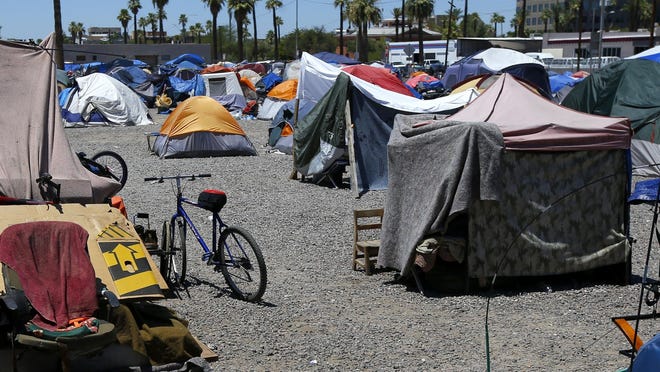[ad_1]
In a year where pandemic-induced homelessness has soared, it may be more difficult for policymakers to assess and tackle the full scope of need in cities across the United States. That problem will create lasting consequences for America’s poor.Â
Every January, data is collected nationwide about individuals and families who are experiencing unsheltered homelessness. But the COVID-19 pandemic has delayed or halted such information gathering this year. Tragically, those who have been driven from their homes because of economic hardship are likely to remain invisible in many communities.
Over the next four years, fallout from the pandemic is expected to cause chronic homelessness to climb 49% nationwide, according to a new study by the Economic Roundtable, a California-based nonprofit urban research organization. The analysis predicts that the homelessness crisis will peak in 2023, with an additional 603,000 American adults without a permanent roof over their heads.
In years past, service providers, advocates and volunteers would fan out across cities to conduct a manual head count of those living on the street. The survey was conducted over a 24-hour period in late January to document the number of people experiencing homelessness in various communities along with those living in emergency shelters, transitional housing or safe havens.

The annual street count has been modified, cancelled or delayed in hundreds of communities because of the COVID-19 risks associated with bringing together hundreds of volunteers and the face-to-face interaction needed to evaluate those living on America’s streets. Known as the annual point-in-time count, the data gathering is mandated by the federal government through the Department of Housing and Urban Development and helps determine funding for homeless services.
On a given night, roughly 568,000Â people in the United States are experiencing homelessness, according to the January 2019Â national point-in-time estimate.
In mid-December, HUD released guidelines for a safe point-in-time count, including the option for communities to forgo the unsheltered census count. Some communities are pulling numbers from social agencies’ Homeless Management Information System, accounting for those who have had contact with homeless service providers. But other cities — including those with the largest homeless populations such as Seattle, Los Angeles, San Francisco and San Diego — are forgoing the count.Â
The real-time survey certainly had its limitations. For example, it does not include those who are bouncing from motels, couch surfing or doubling up with other individuals or families. It also fails to account for the total number of people who access homeless services or shelters throughout the year. Advocates have long complained that the inevitable undercounting of the homeless population leads to a skewed reality prompting insufficient and ineffective policy and funding solutions. Still, some information is better than none.
My fear is that without concrete numbers to pressure lawmakers into allocating appropriate resources, an already vulnerable population could face irreparable damage, particularly for those families with children. The Biden administration must assume those experiencing homelessness will be greatly inflated because of the pandemic and set aside additional spending for affordable housing solutions and support services.
In addition, those who have lost housing because of the pandemic — particularly those not in shelters — will need an access point for when the COVID-19 vaccine becomes more widely available. In the past, homelessness advocates and social service agencies would use geographic data gathered about individuals to relocate them and offer meals or warm clothing. A similar approach could be used to ensure those folks receive an inoculation. Â
I understand the need for caution this year, truly I do. But I also know how at risk America’s homeless population is and will continue to be. I always preach the need for using accurate data and arming oneself with information when making decisions. That isn’t a luxury in these times of COVID. When doling out funding for homeless resources, policymakers will simply need to use their heads — and their hearts. Â
National columnist Suzette Hackney is a member of USA TODAY’S Editorial Board. Contact her at shackney@usatoday.com or on Twitter: @suzyscribe

[ad_2]
Source link





